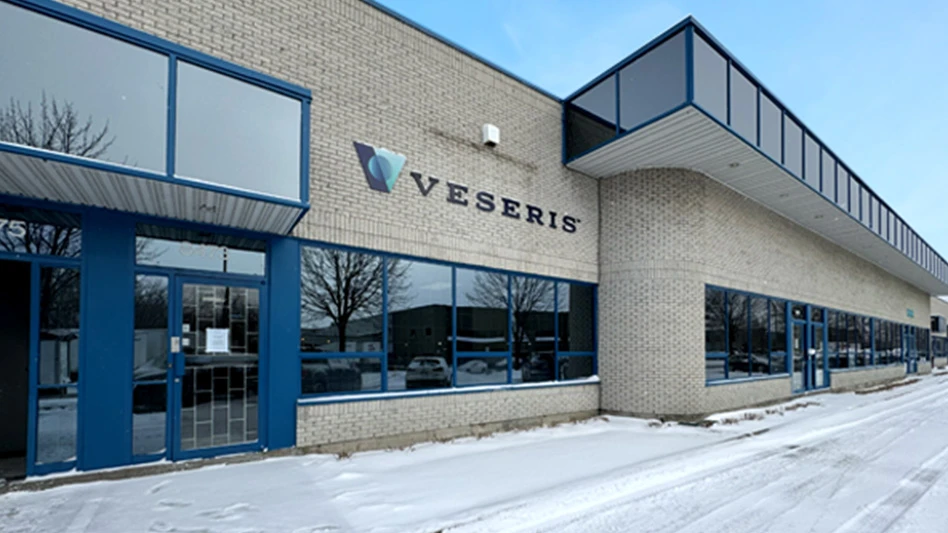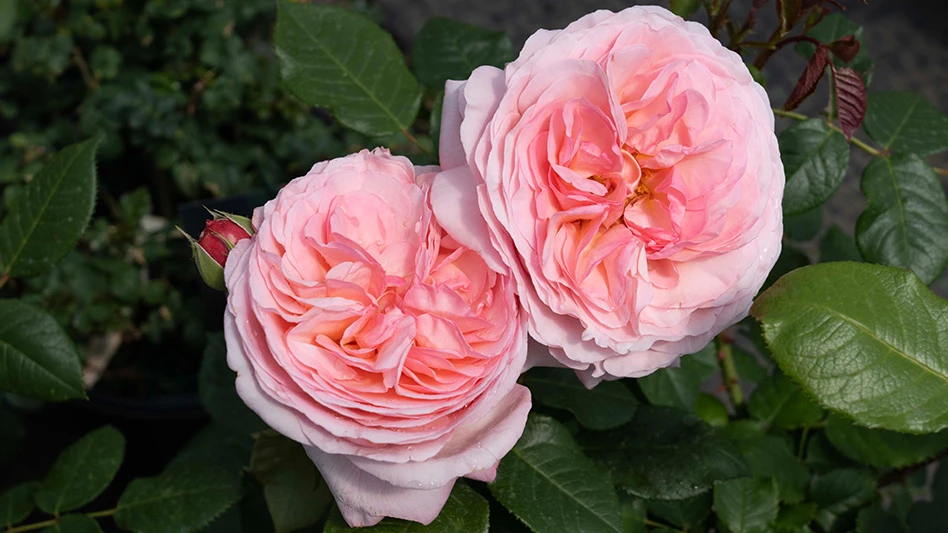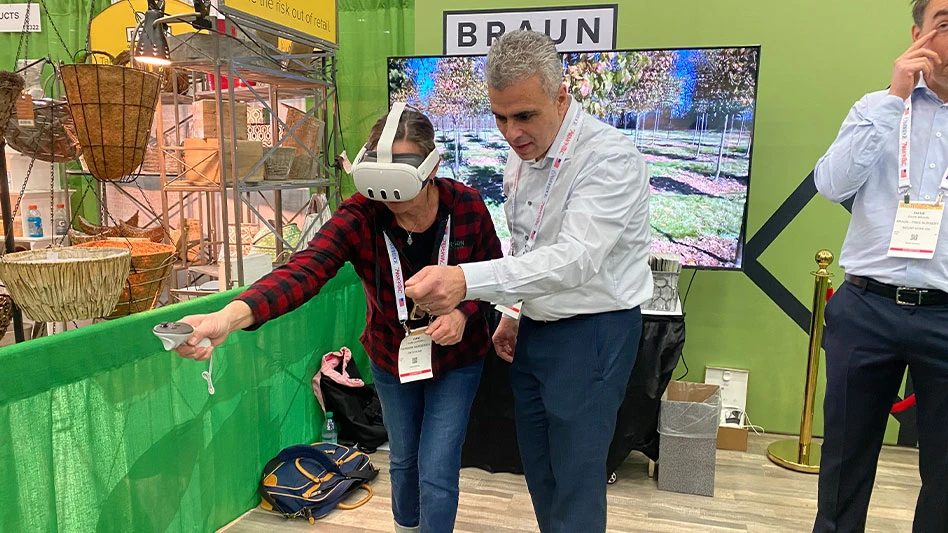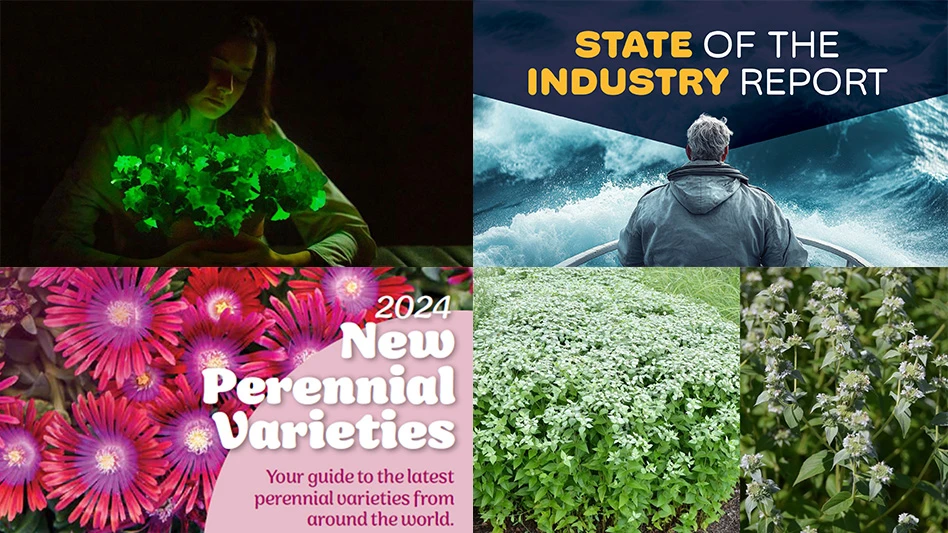
There is no denying the popularity of vegetatively propagated annuals in the spring greenhouse. The shift from seed to cutting-propagated material is the result of several new trends converging, including the exciting new genetics that can be brought to market more quickly with vegetative propagation and increasing popularity for larger finished container sizes.
Rooted liners are certainly available for purchase and can help simplify your production, rooting your own cuttings also has several benefits, such as greater control over quality and timing. To maximize success in propagation, producers modify environmental conditions and cultural practices to accommodate crop needs throughout the stages of rooting: stage 1 cutting arrival and sticking; stage 2 callusing; stage 3 root development; and stage 4 toning. But one of the most important stages doesn’t even involve plants, and that is stage 0 prior to the arrival of cuttings. This article is going to focus on how to prepare for propagation.
Just like any other time of the year, cleaning and sanitizing the growing environment help set the precedent for success. There is an additional importance to having your propagation area clean, as cuttings will spread from a single, smaller, high-density area to throughout the greenhouse once rooted cuttings are transplanted and final containers set down and laid out on floors or benches. In addition to the regular chemicals used for sanitizing greenhouses, pay special attention to algaecides in prop houses.
The high humidity and frequent mist, combined with warm air temperatures, light and mineral nutrients in propagation areas allows algae to thrive. Once the propagation area is cleaned, it is time to move on to preparing your trays for sticking. Look at the stick sheet to make sure the correct tray size is used and enough of them are available.
To save time on the day of sticking, it is a great idea to prefill trays with soilless substrate, but there are a few key points to follow. First, make sure the substrate is moistened so it will re-wet easily once the tray is stuck and placed under mist. If the substrate is too dry, it will be hydrophobic and struggle to re-wet. Second, once trays are filled, they are usually stacked to save space. Be sure to offset trays as they are stacked on top of each other to keep them from “nesting” in each other and compacting the substrate, which can result in excessive moisture retention and insufficient airspace, both of which can delay root development.
In addition to substrate and trays, are other cultural inputs, propagation environments, and labor ready? Make sure water lines to mist and other irrigation implements are turned on and functioning. Also be sure any additives to water such as acid or water-soluble fertilizer are on hand, mixed and injectors calibrated ahead of time. Also, be sure any plant growth regulators that may be applied at the time of sticking are available, such as liquid auxin formulations for promoting root development, BA+GA to reduce lower-leaf yellowing on species like geranium, or GA inhibitors to control unwanted stretch. Turn on air and bottom heat to the setpoints you will use during propagation.
This is especially important if greenhouses have been shut down and kept at minimum temperatures in late fall and early winter. Make sure supplemental lights are operating and that all bulbs or diodes are emitting light, and that any lighting program is running correctly. While not a propagation environment per se, don’t forget to make room in coolers to hold cuttings that are lower sticking priorities. Last, but certainly not least: Ensure you have sufficient labor scheduled! Receiving thousands and thousands of cuttings is no easy task and having the labor ready will ensure a smooth sticking process.
The arrival of cuttings is no time to be getting ready, so don’t get caught unprepared. Investing in the time to get geared-up for cutting propagation now will save time and headaches later. By giving stage 0 as much attention as stages 1 through 4, you are committing to success and quality.

Explore the December 2023 Issue
Check out more from this issue and find your next story to read.
Latest from Greenhouse Management
- Metrolina Greenhouses donated more than $1 million in 2024
- De Vroomen Garden Products celebrates 100 years with new products, global celebrations
- ThinkPlants announces new shrub program
- American Floral Endowment 2025 scholarship applications now open
- Two Proven Winners ColorChoice varieties take top honors in Australia’s 2025 Plant of the Year
- Registration now open for 2025 National Floriculture Forum
- GardenComm hosting 10-session Winter Webinar Series
- Growing beyond the greenhouse





